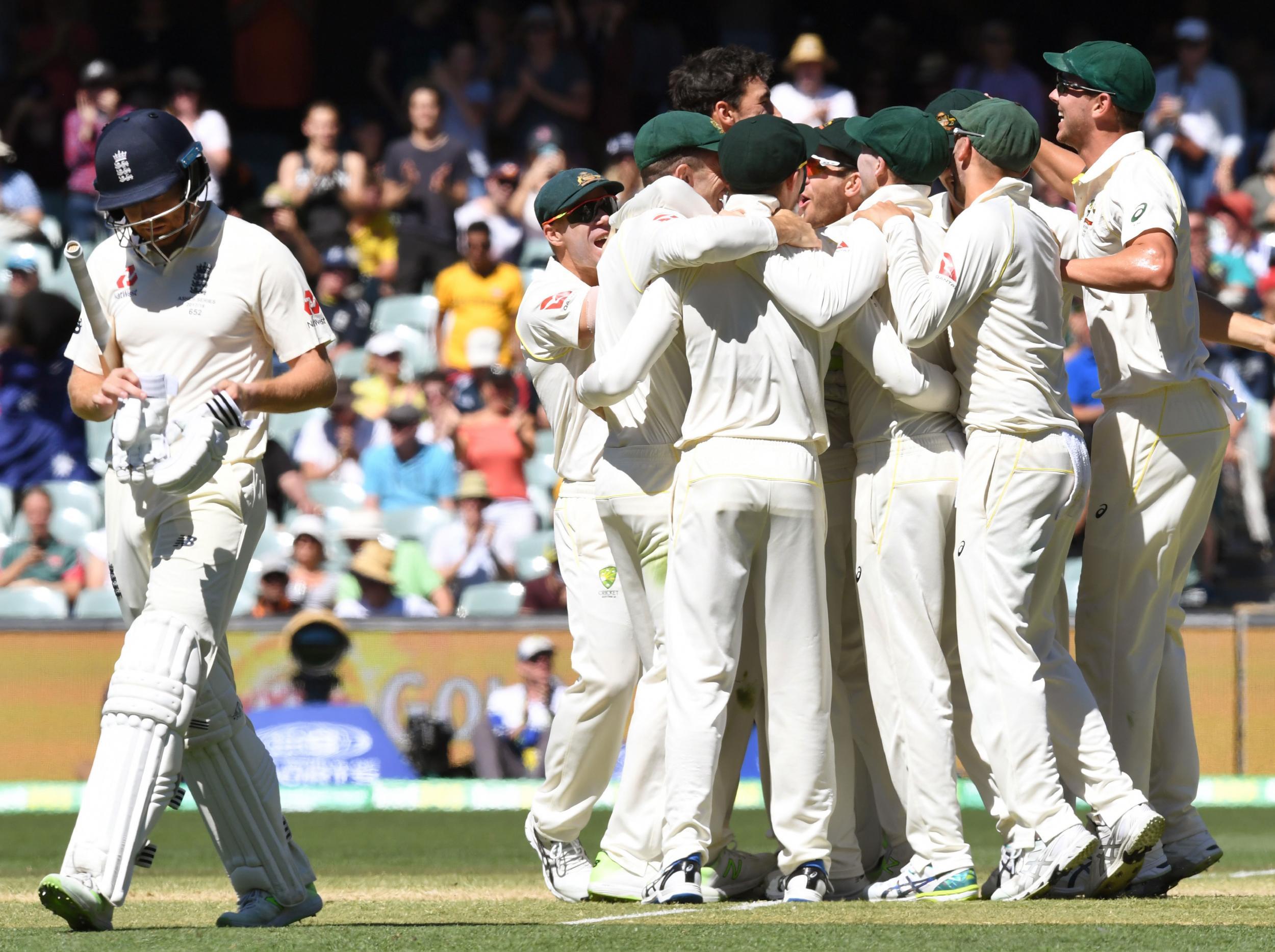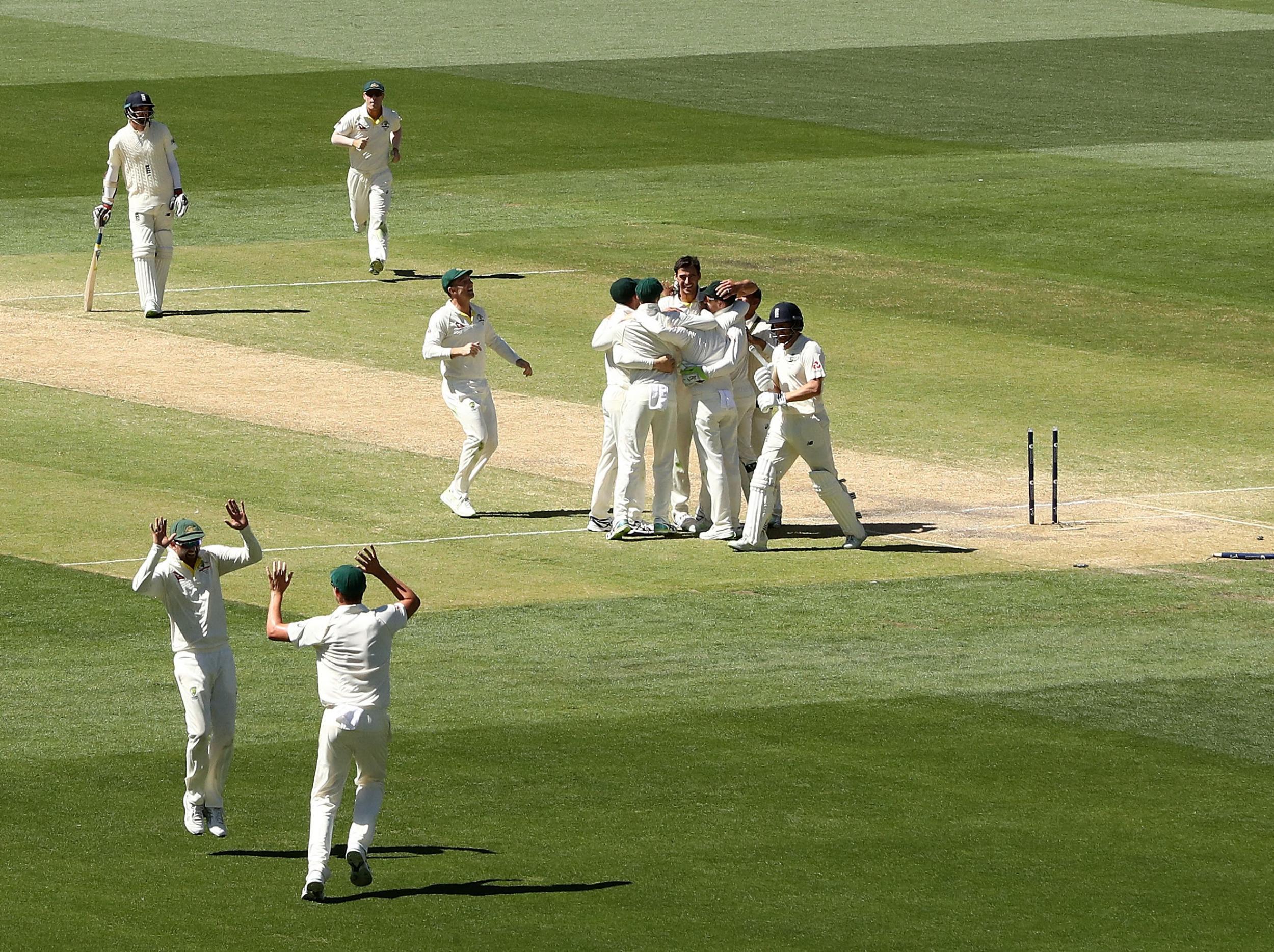What happens on the field, stays on the field - but should it? Cricket's stump microphone conundrum
Cricket, a game in search of eyes and ears, should be striving to let us into its world, rather than striving to lock us out

What happens on the field, stays on the field. For as long as competitive sport has been played, this has been one of its founding principles: that when the final whistle blows, the last punch is thrown, what happened before passes into irrelevance.
Which, if you give it the slightest moment’s thought, is a slightly curious notion, and one applied with varying degrees of consistency. Post-match interviews, for example, would be a good deal duller. Tell us about that diving header you scored to win the game in the 90th minute: “Nah, don’t want to get into that. What happens on the field, stays on the field. I’ll take that champagne off your hands, though.”
This is an issue that has been brought into sharp relief by the current Ashes series, in which England are being soundly beaten, and not just with bat and ball. In particular, they have become increasingly irritated by Australia’s - apparently deliberate - tactic of making pointed comments within earshot of the stump microphones, in order to create a media hubbub. Jonny Bairstow, forced to defend an innocuous “head-butt” in a Perth bar after Australia’s David Warner mentioned it during play, has been its most notable victim.
During the second Test at Adelaide, England coach Trevor Bayliss questioned whether players’ utterances on the field should really be broadcast live on television. “I don’t think anyone has to listen to what is being said,” he explained. “I’d like to see the microphones turned down. I don’t think that’s necessarily a thing for young kids watching.”
This is not a new debate, of course. Indeed, last year it was Australia making the same argument, after their fast bowler Josh Hazlewood was fined for using some choice language during a Test against New Zealand. “The microphones shouldn’t be on,” former fast bowler Ryan Harris said at the time. “Turn them off and we have no problem.”
Quite what is the point of a stump microphone if it’s not turned on is a metaphysical question perhaps best left to Harris to answer. But it remains a strangely prevalent attitude within the game, which stems from this same unquestioned, almost unquestionable assumption: what happens on the field, stays on the field.
Underpinning this, I think, is something even deeper-seated: the belief that competitive sport exists on a different plane to regular society, and should be policed accordingly. What would be common assault in the street is cheered by thousands in the boxing ring. What would be described at the supermarket as ‘attempted murder and possession of a dangerous weapon with deadly intent’, is described at the Olympics as simply very bad archery. All this, in itself, is fine.

The problem comes when a demand for special treatment bleeds into something more sinister: the idea that the moral code under which society operates is not necessarily relevant to sport. Old pros talk about the abuse - or “banter” - that would fly around when they were playing the game, and the furore that would have resulted if stump microphones had been around in their time. They’re not being rueful, of course. They’re being nostalgic.
It is not just the fan who sees sport as an escape. For the competitor, it is also a form of liberation: a bubble, a sanctuary, a place where the normal rules of action and consequence do not apply. This is why many cricketers see stump microphones as an unwelcome, even sinister intrusion. The field is their safe space, their Narnia, their dark Web, where fantasies can be indulged and dreams made.

Ask any current player and they will tell you they very rarely hear genuinely objectionable stuff on the field. But it happens. Warner himself was fined just three years ago for telling India’s Rohit Sharma to “speak English”. South Africa’s Herschelle Gibbs was banned for describing Pakistan fans as “baboons” who “should go back to the zoo”. Three decades ago, in a time before stump microphones, Sri Lanka accused Australian fast bowler Greg Campbell of calling one of their players a “black c***”.
This is just the stuff we know about. Imagine the gargantuan, oceanic volume of stuff we don’t. From WG Grace “chaffing” opponents in the 19th century, to the racism faced by West Indian players in the Lancashire leagues in the 1920s, to the modern dogma of ‘mental disintegration’, abuse on the cricket field has always happened in one form or another, and I think we’re kidding ourselves if we believe otherwise.
Too often, though, these incidents have been buried in a sort of omerta: a dereliction of responsibility, a disdain for the watching public that can occasionally cross the line into the surreal. After all, the idea that athletes should have an expectation of privacy when they are performing in front of an audience of millions, reaping extravagant rewards as a result of their deeds, is not simply untenable but really rather ridiculous. Many players only grasp this on retiring for the game and becoming viewers themselves.
All of which feeds into the central point: that whatever gets picked up on them, stump microphones immeasurably enhance the viewing experience. Formula One was one of the first sports to recognise this, by broadcasting excerpts from the pit radio: delayed, edited and curated, of course, but still illuminating and occasionally fascinating.
And in an age where the authenticity of professional sport is being assailed from all sides, whether by doping or fixing or simply layers upon layers of boardroom-approved PR sheen, listening in on the action first-hand is often as real as it gets. It is a live drama, after all, and like any drama it consists of words as well as pictures. Cricket, a game in search of eyes and ears, should be striving to let us into its world, rather than striving to lock us out.
Join our commenting forum
Join thought-provoking conversations, follow other Independent readers and see their replies
Comments
Bookmark popover
Removed from bookmarks